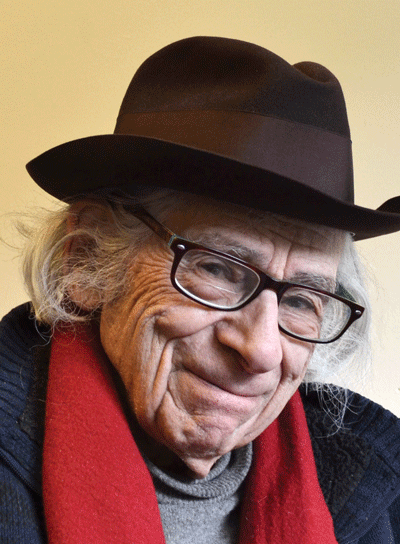Al Milgrom was a Dinkytown giant.
He was the “godfather of the Minnesota film scene,” according to a Star Tribune article published after his death. Milgrom founded the Film Society of Minneapolis St. Paul, taught cinema at the University of Minnesota and released his beloved 40-year project, a hyperlocal documentary titled “The Dinkytown Uprising.”
He suffered a stroke and died at home just weeks after his 98th birthday, the Star Tribune reported. Milgrom was still working and hoped to finish another documentary this year.
“The spirit of Dinkytown is something that Al, I think … sort of both embodied and brought to light in many ways,” said Kristen Eide-Tollefson, founder of the Book House in Dinkytown and coordinator at Preserve Historic Dinkytown.
A sensitive filmmaker in a changing Dinkytown
At the age of 92, Milgrom released his first feature-length documentary, “The Dinkytown Uprising,” which was a culmination of 40 years of filming the neighborhood.
The film focuses on the Red Barn protests, a student-led occupation of Dinkytown opposing the Red Barn restaurant development from taking over a local business and the Vietnam War. The protest reached its peak around the time four university students were killed by police at a demonstration at Kent State University.
Today’s Dinkytown is no stranger to such development, something which Milgrom never reserved judgment for, according to Dinkytown historian Bill Huntzicker.
Huntzicker said he remembered Milgrom as a sensitive filmmaker. He said Milgrom helped capture Dinkytown’s history and was persistent in preserving the small-town appeal and “architectural integrity” of the neighborhood.
“Dinkytown was a place to feel at home for small-town folks and Al really got that,” Huntzicker said. “We agreed … with a lot of these changes, eventually it won’t be a town and it won’t be dinky.”
The shifting landscape of Dinkytown is ongoing. The COVID-19 pandemic and new commercial developments have led to a string of closures from the Purple Onion to Dinkytown Wine and Spirits and McDonald’s. Community members say the changes create a strain that feels overwhelming at times.
Last year, Milgrom wrote an editorial to the Star Tribune reflecting on Dinkytown’s history and criticizing the gentrification and modernization of the area.
“Today? A different Dinkytown. No longer the students, hippies, neighbors congregating in a mélange of coffeehouse, ma-and-pa grocers, scattered bookstores. Now, gentrified high-rises, smorgasbords and diners, and a Target replacing former Marshall High,” Milgrom wrote. “You will find a far different clientele, along with many foreign student newcomers, all with seemingly little awareness of the 1970 sidewalks underfoot.”
After the George Floyd protests and a contentious election, Milgrom’s film will continue to stand as a time capsule for the echoes of Dinkytown’s rich protest history, said community historian Mike Linnemann.
“Some of the [historical] sources are going to disappear or degrade over time,” Linnemann said. “We’re going to have books on the George Floyd protests and what happened and why we burned down a police station. … That’s no different from this, it’s just that Al did it himself.”
Eide-Tollefson said she will miss Al’s constant presence in Dinkytown and the richness he brought to the neighborhood. She said his critical eye and love for the four square-block town will carry on through his work and the people he met.
“Dinkytown has sort of been a center point for Al’s whole life,” she said. “He traveled and he was in the war. And yet he always came back … His connection with the people of Dinkytown and the pulse of Dinkytown and the creative dimension of Dinkytown was just a constant through all these years.”



















